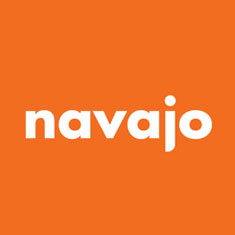Have you ever considered that, in any type of interaction or communication there is always a hierarchy of information involved?
Even the simplest verbal interactions follow a natural order and some basic rules of hierarchy:
- “Hello!”
- “How are you?”
- “Haven’t seen you in ages!”
- “Are you staying long?”
- “I like your hat!”
When we communicate, we follow this natural order and established rules of engagement which help structure our interaction with others. This helps to ensure we follow social norms of politeness, establish what we are trying to say in the order we want to say it, and finally build up to the key part of our communication and interaction.
As humans, we have an inherent need to connect, and therefore often adjust our communication style according to who we are speaking to or addressing in order to best connect and get our point across- whether this is a simple greeting or a ground-breaking idea.
This methodology is applied to all types of communication, whether verbal or written.
But what happens when we use communication without any hierarchy or structure? Consider these examples:
Example 1:
You’ve just bumped into someone you know in the street and you start the conversation like this:
“I’m very well, my friend in China is fine too, and my dog’s at the vet in case you were going to ask, and I’ve got a new car and my microwave is broken, shall we talk about the weather, or my microwave, do you want to call me? Hello!”
Example 2:
You’re sending a marketing email to your customers and structure the email like this:
“Unsubscribe from our email list, our local address is: xxx, recommend us to your friends and receive a discount, we have some special offers you might be interested in, do you want to contact us by phone, by email? our trends for 2020 are at the bottom of the emailer. Welcome to our newsletter, contact us, browse our latest collection”.
You wouldn’t expect to have many friends or customers if this was your communication style, would you?
Early days of the web
It was no surprise that, during the early days of web and digital communications, “Welcome to our website” was placed front and centre on a website’s homepage in an attempt to follow standard rules of engagement and social etiquette with potential visitors. Clients and designers alike were transferring a verbal communication approach to the digital environment. The important message seemed to be the greeting, with oftentimes not much thought placed on important details customers might need to find.
In time and in the absence of time, users began to appreciate a more immediate access to what they were looking for; and so these types of greetings were eventually dropped to be replaced with much more relevant and targeted user information – effectively replacing a static “Welcome” with a We understand what you need approach to the communication style. This, in time began shaping the way designers viewed the way websites should be layed out and personalisation, customisation and super fast access to key content has now become the norm.
Etiquette has changed to mean something else now. It has become synonymous with clear communication, hierarchy of information, and great user experience.
Communication today
When designing websites today, establishing a great user experience stems from robust information hierarchy and clear communication. This in turn, stems from a thorough understanding of:
- Your audience
- What they may already know about you
- What you want to tell them about you
- What they might be looking for
- How they might be looking for it
As a communications agency, we begin all digital projects by trying to answer the above questions. The answers help drive the order in which the content will be placed on a website’s pages.
Ordering and labelling items for a website happens in the form of a website flowchart, and is called the website’s Hierarchy of information, or “Information Architecture” (IA).
An IA serves to map the information in a logical and intuitive hierarchy, but it also gives us a visual representation of how the website might function. It also allows us to see which parts of the content can be cross-referenced, and how to make the user experience as intuitive and helpful as possible.
Check out some of our recent projects to see what we mean:
In conclusion, without clear information hierarchy there is no clear communication. And without clear communication, you might as well place a big red “unsubscribe” button at the top of your homepage for your customers to seek services elsewhere!
Thalia Iacovou is Director and Head of Brand strategy at navajo


